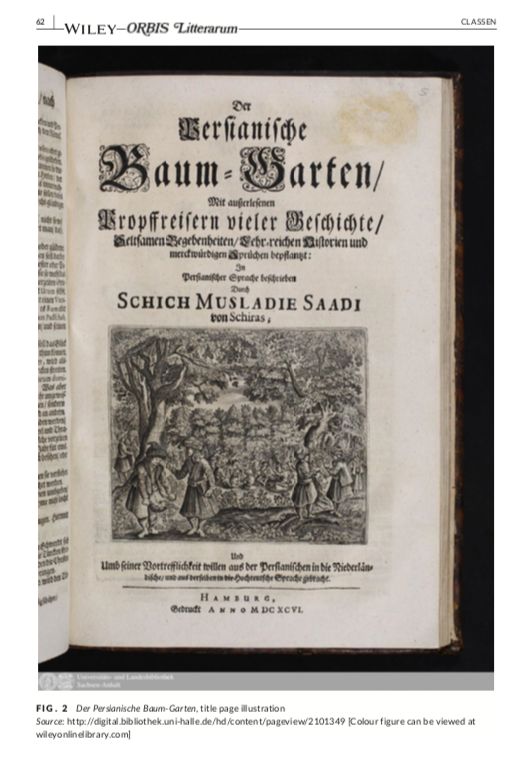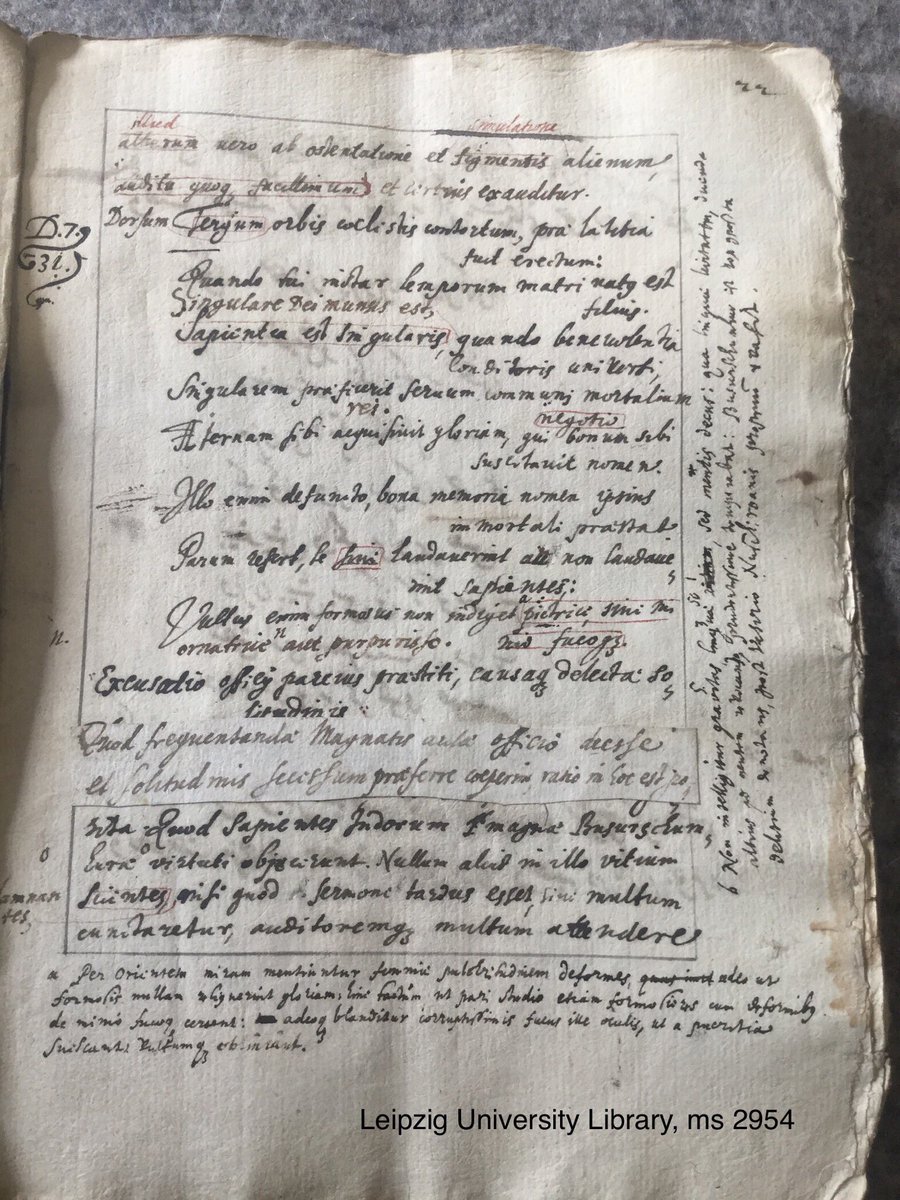
A telling example of the basic factual errors that plague discussions of world literature: a 2021 essay, by a senior scholar at a major research university, on Adam Olearius's 1654 Gulistān translation as case study for understanding world literature onlinelibrary.wiley.com/doi/epdf/10.11… 

A good premise, but the author mistakes a German translation of Daniel Havart's Dutch translation of an entirely different work by Saʿdī (Būstān) for a later edition of Olearius's 1654 Persianischer Rosenthal, i.e. he misidentifies the very text that's the focus of the essay. 







There are also a number of smaller mistakes, as well as the usual misunderstandings: inflated claims of linguistic ability, obliviousness to specific circumstances of mediation, the narrow view of the "global" as constituted by Western European reception/travel
It's hard to get all the details right (& I'm as susceptible to error as anyone), but that this could be written and pass review seems to confirm both a general disregard for the expertise of scholars who work specifically on the "global" dimensions of literature...
and the ease with which even glaring errors can circulate unnoticed in an "interdisciplinary" humanities focused on big theoretical questions.
Of course, these complaints will be familiar from the conversation around God's Shadow, which sadly ended up being more about the tone of AM's reviewers than the problems of scholarship they were diagnosing.
• • •
Missing some Tweet in this thread? You can try to
force a refresh











